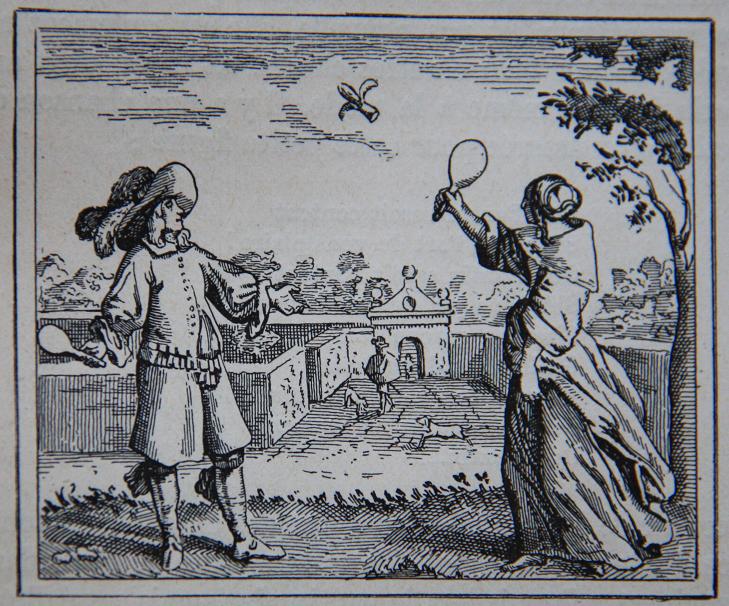
In March 1668 Sobieski recalled the queen Mary from 9 years before: 'Just remember my beautiful dear grace, how merry you were with your cadaver [first husband], though you showed to be not fully delighted. And with me? Have watched it myself visiting your grace.: at first in Warsaw, after the first childbirth and such severe illness, as you persistently ordered to deliver good company, music and dance. And later in Zamosc and Zwierzyniec, your persistent mask balls and games of all kinds, cards, blind man's buff, au petit jeu, strolls, and million other games.' Still in 1683, on his way back from the Vienna battle, he complained to the queen Mary about those pursuing solely 'earthly plaisir' He described it as attending and thinking of 'just balls, ballets, comedies, cadeaux, ruel's etc.' The context of this passage proves that he was not criticising the Queen herself, but strangely, he catered for her favourite entertainment. It is worth having a closer look at the aforementioned forms recreation of Mary Kazimiera.
The blind man's buff (ciuciubabka) was then called 'ciuciubabka' or 'ślepa babka' (blind woman). The rules of the game were described by Jedrzej Kitowicz: 'Blind woman, is when one person with eyes covered runs around the room to catch another participant of the game. Those playing the game had to disperse around the room and should let their presence known by whining to the 'blind woman'. But having whined they moved to another place, thus were difficult to catch. The one who got caught should take turn and run around the room blindfolded to catch another person' Ciuciubabka introduced another difficulty to the game and made it more spectacular. As Łukasz Gołębiowski explained in 1831: Ciuciubabka was similar to the ślepa babka (blind woman) but different in such way that not only eyes but also hands were folded in the back and in such way one had to catch another player. One needed to jump aside and turn around swiftly to catch someone.'
The game called 'au petit jeu' is called today 'the censored'. Zygmunt Gloger in 1900 (quoting Golebiowski) explains the rules of the game: 'one person sits in the middle or on a separate seat, taking the name of an object, for example: a table, bread, a clock etc. Another participant walks around the group and quietly collects information about the person. When information is gathered from all participants it is said aloud [...]. Beware of being acrid in the game. It takes a lot of sense of humour and politeness to make this game pleasurable'.
Another popular form of entertainment was the so called cadeaux – surprises. The queen Mary had a chance to learn it as a maid of the queen Louise Mary. The game consisted of a recreational walk into the forest and, according to the latest French fashion, the party 'discovered' a table full of food and drink on a glade and playing musicians dressed up as satyrs.
There were plenty of ideas and it is only a fraction of 'million other games'.
We would like to inform that for the purpose of optimisation of content available on our website and its customisation according to your needs, we use information stored by means of cookies on the Users' end devices. You can control cookies by means of your Internet browser settings. Further use of our website without change of the browser settings means that you accept the use of cookies. For more information on cookies used by us and to feel comfortable about this subject, please familiarise yourselves with our Privacy Policy.
✓ I understand